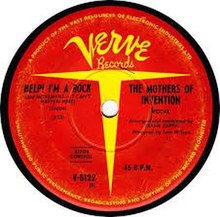성 공포증
Sexophobia성 공포증은 성기관이나 성행위에[1] 대한 두려움이며, 더 큰 의미에서 성행위에 대한 두려움이다. 이와 같이 학력, 개인적 경험, 정신에 근거한 개인의 태도나 종교 단체, 제도 및/또는 국가와 같은 집단적 실체로부터의 일반적인 낙인찍기에 적용할 수 있다.[2]
건강
임상 대화에서 성 공포증은 개인 건강 문제에 대해 말하기 위해 고용된 의사소통 전략에서 나타나기 때문에 환자들이 의사에게 말하는 방식에 영향을 미친다.[3] 그런 의미에서 의사들이 중립적이고 베일에 싸인 어휘를 사용하는 것은 환자들이 자신의 성적 문제에 대해 공개적으로 말하는 것을 단념시킬 수 있다.[3]
그렇지 않다면 역사학자 겸 사회학자 신디 패튼은 동성애 혐오증, 세균 공포증과 함께 영국의 HIV 전염병 2기 발달을 특징으로 하는 주요 경향 중 하나로 성 공포증을 지목했다.[4]
참조
- ^ 세겐의 의학사전에 기초한 자유사전에 의한 정의
- ^ Jackson, Richard (2004). (Re)constructing Cultures of Violence and Peace. Rodopi. p. 96. ISBN 9789042011496.
Sexophobia is the social and personal stigma associated with anything related to the physical and psychological aspects of sex and sexuality. This is evident from the 1961 Soviet Moral Code (…)
- ^ a b Minichiello, V; Browne, J (1998). "Issues in clinical care of people being tested/treated for sexually transmissible infections". Venereology. 11 (4): 27. Retrieved 11 February 2017.
Other researchers provide evidence of the impact of sexophobia on clinical talk through the identification of the strategies which are used to deal with embarrassing issues. These include the use of neutral and veiled vocabulary by doctors, which discourages patients from talking about sexual issues.
- ^ Aggleton, Peter; Parker, Richard (2002). Culture, Society And Sexuality: A Reader. Routledge. p. 337. ISBN 9781135360030. Retrieved 11 February 2017.
On the other hand, there was widespread and continuing fear and prejudice about AIDS which found expression both unofficial circles (for example in media coverage) and in official indifference at a policy level. This phase is well characterized by Cindy Patton (1985) as one of 'homophobia, sexophobia and germophobia'.


